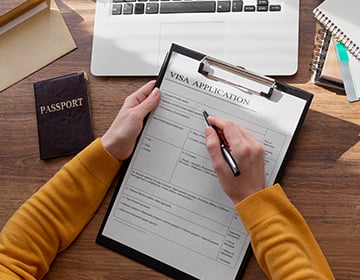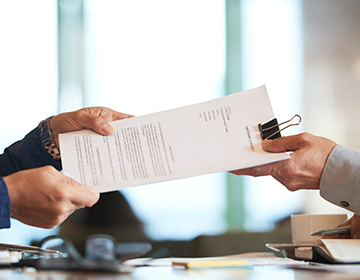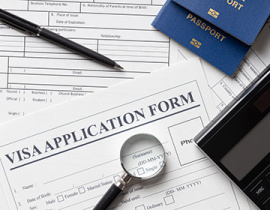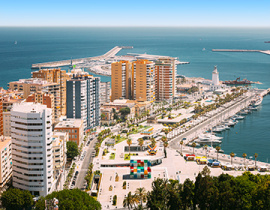- Home
- Blog
- Legislation
- Your Guide to Spain’s Padrón: Registration, Benefits, and Process
Your Guide to Spain’s Padrón: Registration, Benefits, and Process
If you are planning to move to Spain, you have likely heard of El Padrón. Officially known as Empadrónamiento, this local registration certificate is your first step to becoming a Spanish resident.
Depending on your case, registering with a padrón might or might not be mandatory. Either way, it comes with several benefits that can make your day-to-day life easier.
This page outlines everything you need to know about the padrón in Spain, including registration steps, key benefits, and the renewal process.
What Is a Padrón Certificate in Spain?
 The padrón, officially known as the Certificado de Empadrónamiento (Certificate of Census Registration), is the record of the people living in a Spanish municipality. Everyone who resides in Spain for more than 180 days per year is legally required to register in the ayuntamiento (local town hall) of their place of residence.
The padrón, officially known as the Certificado de Empadrónamiento (Certificate of Census Registration), is the record of the people living in a Spanish municipality. Everyone who resides in Spain for more than 180 days per year is legally required to register in the ayuntamiento (local town hall) of their place of residence.
The main purpose of the empadrónamiento in Spain is to enable municipalities to track how many people live in their area. This data determines how much funding each local government receives from Spain’s central administration. Ultimately, it allows town halls to plan services, infrastructure, and resources more efficiently for their residents.
Once you register in a padrón in Spain, you will be considered a resident in the municipality. You will also be considered a fiscal resident and subject to taxes. However, getting a padrón in Spain does not provide residency rights. You must apply for a separate residency permit, such as the Non-Lucrative Visa, to live in Spain long term.
Benefits of Holding a Spanish Padrón
Having a padrón in Spain allows you to benefit from several residency benefits, including:
- Receiving local healthcare services
- Enrolling in local schools
- Applying for the TIE (residence card)
- Opening a Spanish bank account
- Buying property, vehicles, and other assets
- Discounts on municipal swimming pools, day care centers, music schools, language schools, etc.
- Potential discounts in municipal taxes
What Are the Required Documents for Spanish Padrón?
 Typically, the required documents for registering in a padrón are as follows:
Typically, the required documents for registering in a padrón are as follows:
- Identity Verification;
- Passport
- National ID card
- NIE (Foreigner Identification Number)
- Proof of Address;
- Title deed (if staying in your own property)
- Rental contract (if renting a home)
- Authorization document personally provided by the host (if staying with a host)
Note: Always check the website of the specific municipality you are registering for. Some municipalities might ask for additional documents.
How to Get a Padrón in Spain?
Applying for a padrón is a straightforward process with slightly different local regulations. Here is a step-by-step guide on how to apply for padrón in Spain:
- Find Your Local Ayuntamiento
Start by searching online for your local ayuntamiento (town hall). You might need to book an online appointment in larger cities like Barcelona or Málaga. Check their website for specific information and see if any additional documentation is required.
- Collect the Necessary Documents
Unless stated otherwise, you only need to provide proof of identity and address. You might need to bring both the original documents and photocopies.
- Submit Your Application
Fill in the application form and submit your documents. You might need to pay for the nominal fee, ranging from €1 to €3. Depending on the community, you may receive your padrón certificate on the spot or you might need to wait a few days or weeks. Your certificate might be mailed to your home address or you might need to return to collect it in person.
Can I Apply for Padrón Online?
 Yes. Several municipalities now allow you to complete the Spain empadrónamiento process through their official websites. Online application is generally straightforward if you have the necessary digital identification, such as Cl@ve, PIN24, DNI electrónico (electronic ID card), or idCAT Mòbil.
Yes. Several municipalities now allow you to complete the Spain empadrónamiento process through their official websites. Online application is generally straightforward if you have the necessary digital identification, such as Cl@ve, PIN24, DNI electrónico (electronic ID card), or idCAT Mòbil.
However, some smaller municipalities may still require you to apply in person. Be sure to check the official website of your local town hall for up-to-date requirements and procedures.
Example: How to Apply for the Padrón Online in Barcelona?
Here’s how to complete your padrón registration through Barcelona’s Oficina Virtual de Tràmits:
- Obtain digital identification, such as:
- idCAT Mòbil
- Cl@ve, PIN24, or DNIe
- FNMT-RCM
- Log in to the Oficina Virtual de Tràmits.
- Fill out the application form.
- Attach the required documents.
- Sign the application electronically using your digital ID.
- Download and save the confirmation PDF.
Renewing Your Padrón
You must periodically renew your padrón certificate if you are not a permanent resident in Spain. Non-EU residents with temporary residence must renew their padrón every 2 years, while EU citizens with temporary residence are required to renew it every 5 years. EU or non-EU citizens with permanent residence do not need to renew their padrón. The initial registration stays valid unless you change or leave your address. If you move, you must register your new address at the local ayuntamiento (town hall) immediately. The renewal or address update process can typically be completed on town hall’s website or in person, depending on the municipality.









